The Role of Junipers in Promoting Other Natives
by Bob Harms (

)
I do not view the native junipers on our land as an undesirable invasive species, but rather as a plant that offers numerous benefits not generally appreciated, even beyond providing important nesting materials for the Golden-cheeked Warbler and a winter food source for birds and mammals. Many areas of our once overgrazed ranchland are gradually being restored thanks to the mulch from our junipers, surviving on bare calcareous slopes that otherwise would have suffered even greater erosion. The view of cedars replacing open fields of grass must be balanced against that of native grasses and numerous other plants gaining a foothold thanks to the mulch and shade that otherwise would be absent. And in fact, only overgrazed fields are at great risk of juniper invasion.
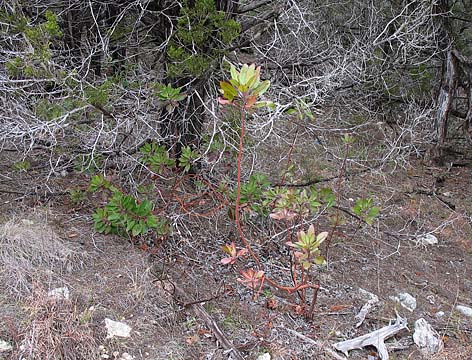 | 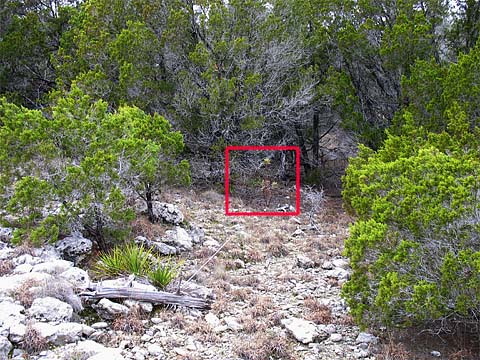 |
|
Six madrones under a juniper at the edge of a steep rocky slope. All are healthy, but those in the thicker mulch are greener.
|
See also "Ashe juniper as a madrone nursery tree."
Perhaps the most salient example of desirable plant associates of the Ashe juniper is the Texas madrone, Arbutus xalapensis, which tends to be found only in association with junipers. In fact considerable lore has arisen to account for this relationship, such as the presence of unspecified microorganisms unique to the juniper mulch. My own experience has been that with human intervention madrones do succeed in areas with no junipers. In my opinion two factors limit the success of madrones in the wild, in addition to a stable soil base (not shrinking/expanding):
- Madrone seedlings germinate in late winter — early spring, the very same time that live oaks produce masses of leaf litter, which would suffocate the seedlings. Junipers do not lose their needles at this time, nor do they ever lose quantities that would cover small madrone seedlings. Essentially the same relationship would hold for open fields with dense grass. Grass under the junipers is always sparse. (Mowing and raking are the human activities that permit madrones to volunteer outside of the juniper areas.)
- The juniper mulch absorbs high levels of moisture, without actually becoming wet. I often decide to move various plants into the ground after a heavy rain. But when I dig in areas of juniper mulch, it seems strangely dry below the surface – in sharp contrast with adjacent bare ground. Only with significant rainfall does this mulch become wet to any depth. Unless the medium for madrone germination has some guarantee of continued significant moisture and is soft enough to allow rapid root penetration, the seedlings have little chance of surviving.
Ironic as it may seem, I have the impression that while many Texans consider the madrone a highly desireable tree many of these same enthusiasts would eliminate all junipers from the hill country.
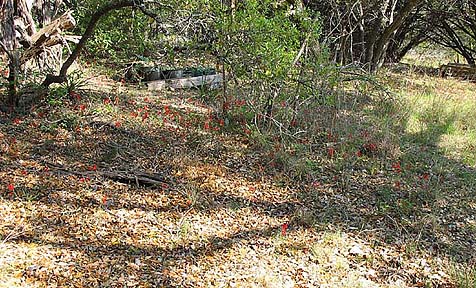
The spread of Salvia roemeriana (April flowers) under junipers
– stopping as oak leaf litter increases, in foreground.
Another species that seems to be equally dependent of the junipers, essentially for the first reason listed above is cedar sage – Salvia roemeriana. Although it prefers a well-shaded area, it tends to disappear under live oaks, but thrive under junipers. Adding to its susceptibility to leaf litter, it goes into a withered dormant state under late summer drought conditions, only to rejuvenate with fall rains.
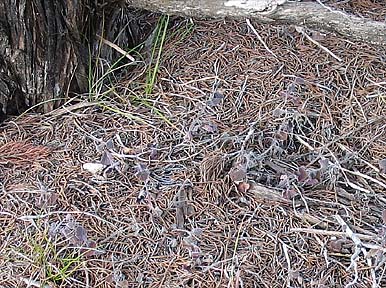 | 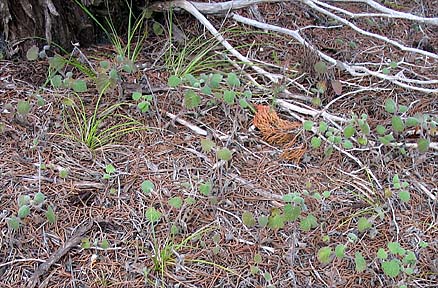 |
August 19
summer drought | Sept. 9
after a fall rain |
|
S. roemeriana as a 'resurrection plant'
|
One grass closely associate with junipers is the cedar rosette grass, Dichanthelium pedicellatum.
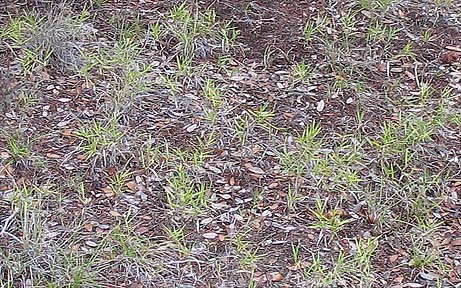
D. pedicellatum
Among species that have been found to volunteer on our land only under junipers are:
- the uncommon reverchon bristlegrass, Setaria reverchonii
- one species of orchid, Hexalectris spicata var. arizonica
- white honeysuckle, Lonicera albiflora
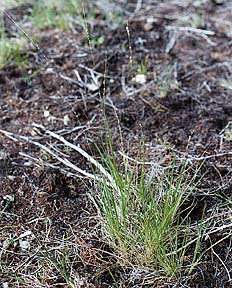 |
 |
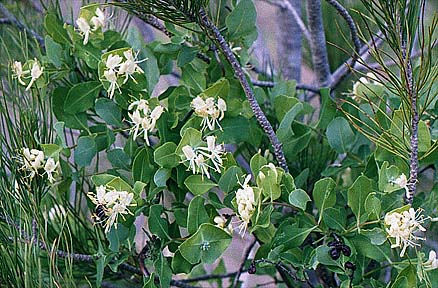 |
| S. reverchonii |
H. spicata var. arizonica |
L. albiflora
(planted under Afghan pine) |
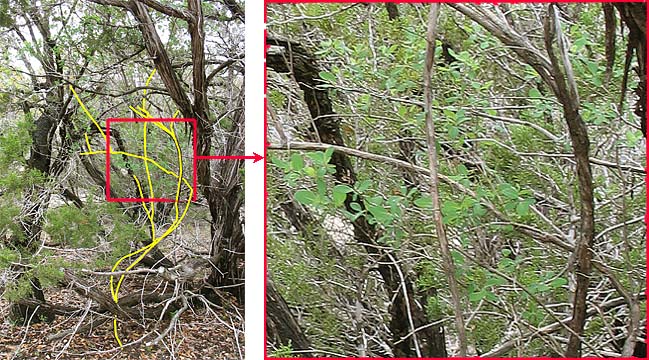
|
| Old L. albiflora in cedars, with main vines highlighted to show their structure. |
Plant Resource Center Home Page — Flora of Texas
— Ashe Juniper